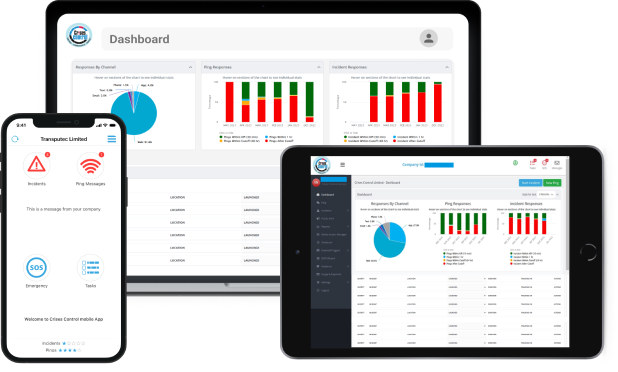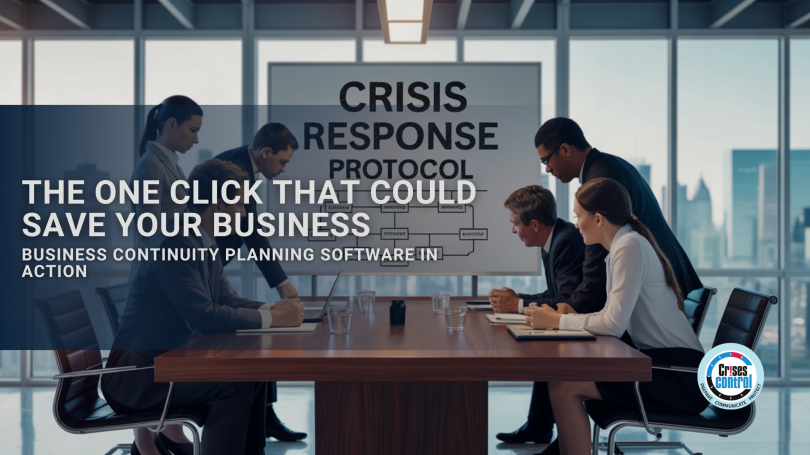Written by Anneri Fourie | Crises Control Executive
When Time Fails You, Will Your Crisis Plan Work?
Business continuity planning starts with being ready for the unexpected. A crisis never sends a calendar invite. It could be a power failure during peak trading hours, a ransomware attack just before payroll is due, or a fire that evacuates your team in minutes. In these moments, every second lost means higher risk, greater cost and more confusion.
Most companies have some form of a business continuity plan. It’s probably stored on a server or tucked away in a printed binder. But here’s the hard truth: in a real emergency, static plans like these often get ignored. No one has time to find a PDF or flick through a document when the pressure is on and decisions need to be made now.
So, what if you could launch your entire crisis response in seconds? What if your plan wasn’t just a document, but a live system, ready to activate at the first sign of trouble?
This is where business continuity planning software steps in, turning preparation into action. And it’s exactly what Crises Control helps you do.
Why Traditional Business Continuity Plans Fall Short
Writing a continuity plan is one thing. Using it effectively when your systems are down or your staff are unavailable is something else entirely.
In a typical crisis:
- People don’t know where to find the plan
- Key staff are unreachable
- Communication breaks down
- Tasks are missed or duplicated
- Decision-making becomes slow and fragmented
Even the best-written plans fail if no one can activate them properly or on time. And this is where so many organisations go wrong. The real gap is not in the planning. It’s in the execution.
What’s needed isn’t just a plan. What’s needed is a way to bring that plan to life the moment it’s needed.
What Business Continuity Planning Software Actually Does
It helps you move from a manual, reactive approach to a system that works proactively.
Instead of relying on memory, paper, or spreadsheets, a good platform allows you to:
- Store your continuity plans in a secure, accessible format
- Trigger predefined response scenarios with one click
- Notify relevant teams instantly using multiple communication channels
- Assign and track tasks in real time
- Escalate issues automatically if actions aren’t completed
- Keep a detailed record for audits and reviews
Think of it as turning your dusty continuity plan into a live engine. One that can launch a crisis response as easily as you send an email.
With Crises Control, this becomes possible.
How to Build a Plan That Can Actually Be Used
Crises Control doesn’t create your business continuity plan for you. That’s your job. But it gives you the tools to activate and manage that plan the moment something goes wrong.
Here’s how to build a plan that works with modern continuity software:
1. List Out Your Most Likely Threats
Start with a realistic review. Focus on the most probable risks your business faces. These could include cyberattacks, IT outages, power cuts, extreme weather, supply chain delays or data loss. Don’t create generic lists. Be specific to your operations.
2. Define Your Critical Services
Identify what you cannot afford to lose. Which teams, platforms or suppliers must stay operational? Work out what dependencies they have and what’s an acceptable amount of downtime for each.
3. Assign Roles and Add Backups
A crisis isn’t a solo job. Decide who leads the response, who handles IT, who speaks to staff and who manages external communications. For every role, make sure there’s at least one backup.
In Crises Control, these roles can be assigned to specific users so the moment an incident is triggered, responsibilities are automatically distributed.
4. Plan Your Communication Channels
If your email goes down, how else will you contact staff or suppliers? Don’t rely on a single method. Plan for text messages, mobile calls, push notifications and voice broadcasts. Include escalation paths if someone doesn’t respond.
Crises Control sends out alerts across multiple channels, all tracked and logged, so there’s no confusion about who got what.
5. Digitise Your Plan and Keep It Updated
Your continuity plan should live in the same place as your crisis response tools. Not in a drawer or a forgotten folder.
With Crises Control, you can upload the plan into a central, secure portal. Everyone who needs access has it, instantly. Updates are easy to make and track. And it’s always available, even if your internal systems are down.
What Crises Control Helps You Do (That a Document Can’t)
Crises Control gives you the tools to respond fast, stay coordinated and stay visible throughout the event.
One-Click Incident Launch
Set up common scenarios ahead of time. When something goes wrong, launch your response plan with one click. The right people get notified. Tasks begin. Communications start going out. No delays. No second-guessing.
Built-in Task Management
Assign actions to specific people with built-in checklists and deadlines. Everyone sees what they need to do. And managers can monitor progress in real time.
Multi-Channel Alerts
Not all crises happen during work hours. Crises Control sends alerts via text, email, push notifications and voice messages, reaching people wherever they are.
Real-Time Escalation
If someone doesn’t respond or complete their task, the system automatically escalates the issue to the next person. You don’t have to chase anyone. The platform handles it for you.
Full Audit Trail
After the crisis is over, you’ll have a detailed record of every action, response time and message. Useful for insurance, compliance or just learning how to improve next time.
Make Your Business Continuity Software Work for You
For many businesses, business continuity planning is treated as a compliance box. You make a document, file it away and hope you never need it.
But that approach won’t help when systems fail or your team needs to act. The gap between planning and action is where things fall apart.
Crises Control helps you close that gap.
It gives you the power to:
- Move from static plans to live response systems
- Reach the right people quickly
- Assign tasks and track completion
- Prove what actions were taken and when
By simplifying response, you reduce damage, regain control and build long-term resilience.
Take the First Step: Don’t Let Your Plan Collect Dust
A good plan is only useful if you can put it into action. If you’ve invested time and effort in building a continuity plan, make sure it can actually work when it matters.
Crises Control gives you the tools to launch your plan, guide your team and stay ahead of the crisis.
If you’re ready to stop relying on hope and start building real response capability, see how Crises Control works in practice.
Contact us today and let us show you how easy it is to turn your continuity plan into an action-ready system.
Request a FREE Demo

